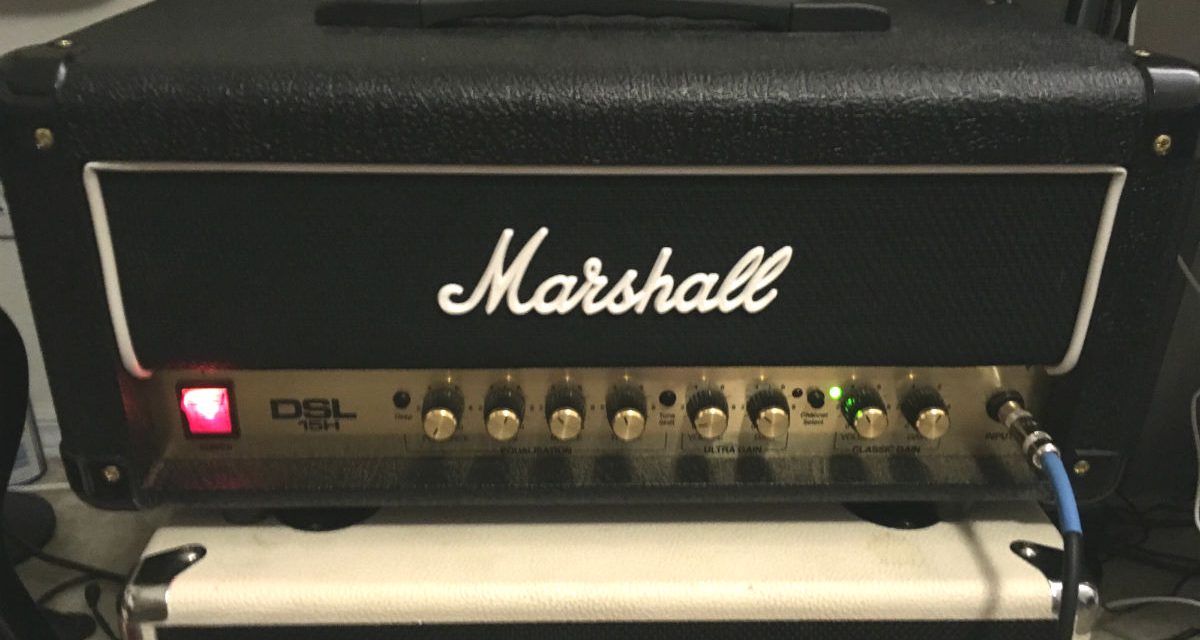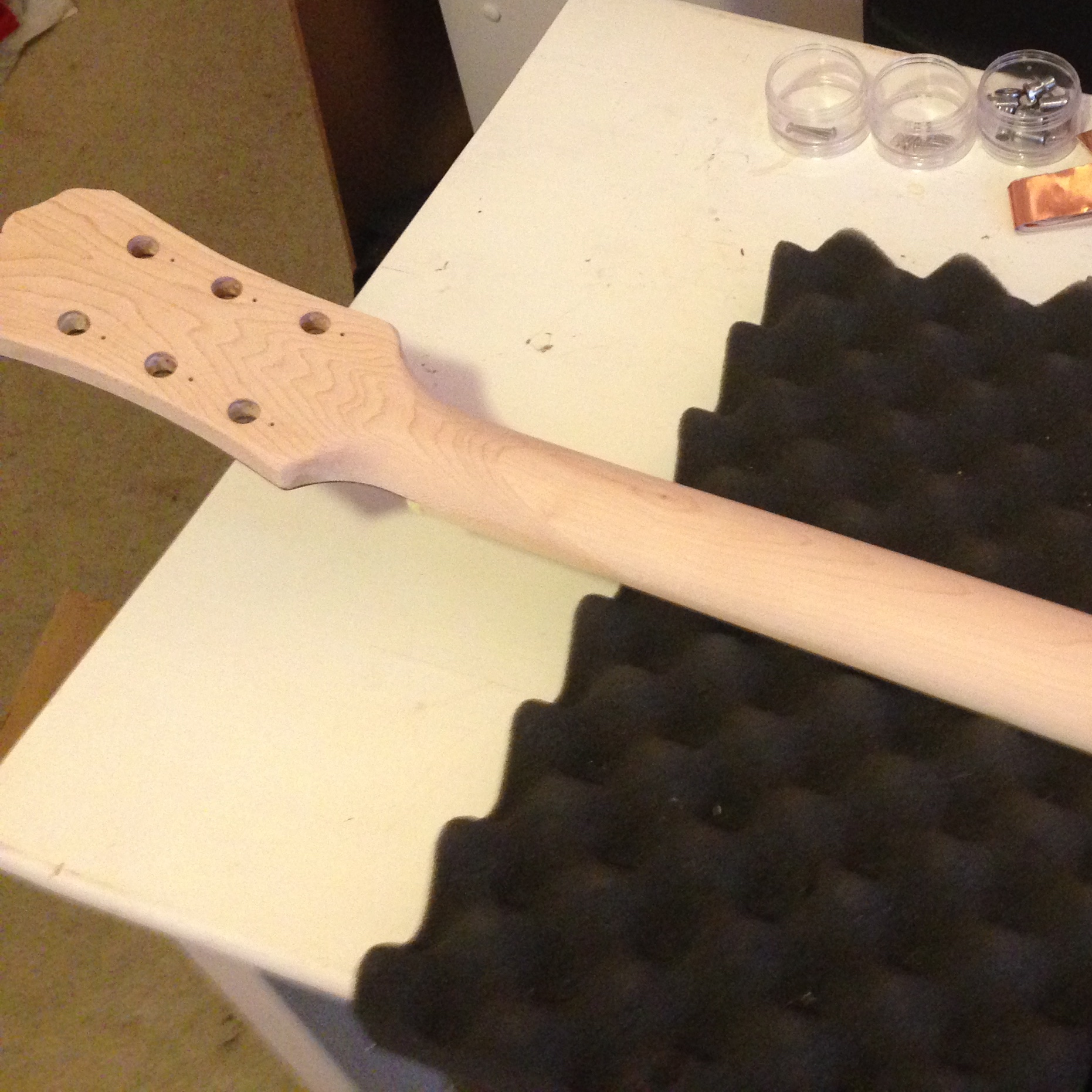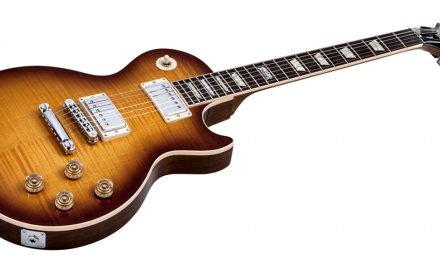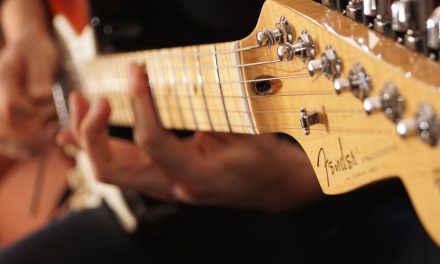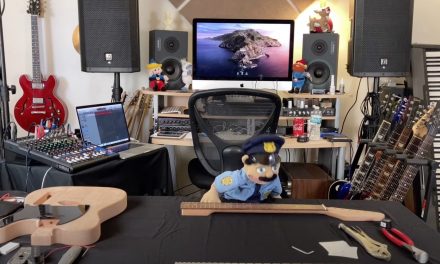I always liked the Marshall DSL40 combo amp. I almost bought one once – I ended up buying a Hot Rod Deluxe, which I ended up not linking and getting rid of. But when it came time to get a nice tube amp head that had a really good dirty tone, I ended up buying the Peavey ValveKing Microhead, a smart decision. I use the Peavey head for recording guitar tracks a LOT. I have the Peavey head and I have the wonderful Fender Bassbreaker 15, which can also do a great dirt sound. But last weekend I bought a Marshall DSL15H head. New. For crazy low money. I won’t post how much, but will say it was in the $200 range. At that price, I couldn’t walk away.
The Internet is full of people reviewing their own gear. Obviously it biases the writer. They don’t want to say “I wasted my money.” In this case, I like the head a lot and I’m happy I bought it. But it has several major drawbacks. Let’s dig in.
The DSL15H is a 15 watt all tube amp head. It can run with a variety of different speaker combos, and it has a switch in the back that cuts the power in half. It’s a very, very LOUD 15 watts. You could gig with this unless you play with a really loud drummer. It has a clean channel and an over the top too much overdrive channel. Unlike what you’d expect from a Marshall, this amp uses 6V6 power amp tubes, which you’d normally expect in a Fender, not a Marshall. You’d expect EL84’s. So it’s ironic that I have a Marshall using Fender power amp tubes and a Fender that uses Marshall power amp tubes (the Bassbreaker 15.)
ANYWAY, you’re reading this review because you own a DSL15H and want validation of your purchase, or because you want to see what my opinion on it is. Here’s my opinion – the clean channel is probably the best clean sound of my three tube amps, but only when the “Deep” switch is on. The Deep switch adds some fairly aggressive low end to the amp in a way that I find very pleasing. This amp sounds BIIIIG. How well all of that bottom end would scale in a band situation, I do not know. But in a home studio, it’s great. When you jack the gain to 10 on the clean channel, you can almost start to get a nice crunch sound. Almost. I like that there’s a ton of headroom on the clean channel, but really, why couldn’t they have given me just a little more gain on it? Yes, I can drive it with a pedal and it sounds great. But damn. I would’ve liked to have gotten a nice crunch sound without adding pedals. Still, the clean channel is killer on this amp.
That leaves the Ultra Gain channel. It’s a gritty seriously overdriven sound that works with some guitars and not others. I like it, but not as much as the overdriven sound on my other two amps. People complain that it sounds too “fizzy.” It kinda does, but you can take some of the fizz of with this wonderful invention Marshall included called a Treble knob. This ultra gain sound is up to personal taste – you’ll like it or you won’t. I like it, but I wouldn’t use it as my main lead tone. I’d be more apt to use it if I wanted something much heavier and nastier than what I normally use.
There are three major problems with this amp. I already mentioned that you can’t get a great crunch sound out of the box – that can be fixed with a pedal. But there’s no reverb (I like reverb.) That can be fixed with a pedal too, but only if you’re OK with a pedal providing your distortion/overdrive. But why would you? It’s a Marshall. And the other issue is that there’s no effects loop. If there were, you wouldn’t have the reverb issue.
With those complaints, why did I buy it? Because the price was crazy low and the clean channel sounds amazing, that’s why. In the $200 to $299 range, you won’t get a clean tone this good. If you want a great clean tone and you’re fine using a pedal for some (or all) of your distortion, and you can find this amp in that price range, I think it’s a great find. It really does sound really big.

